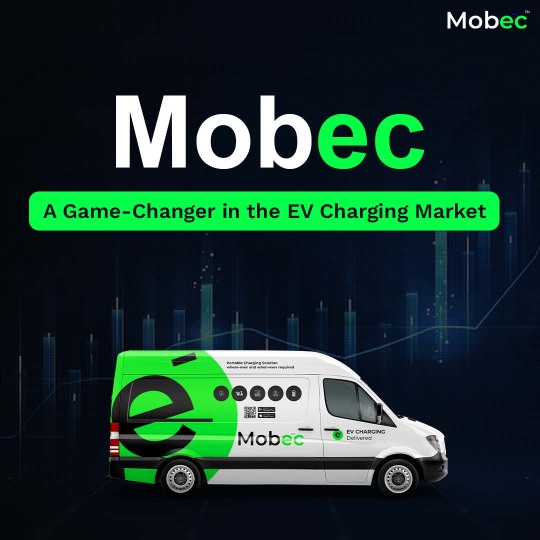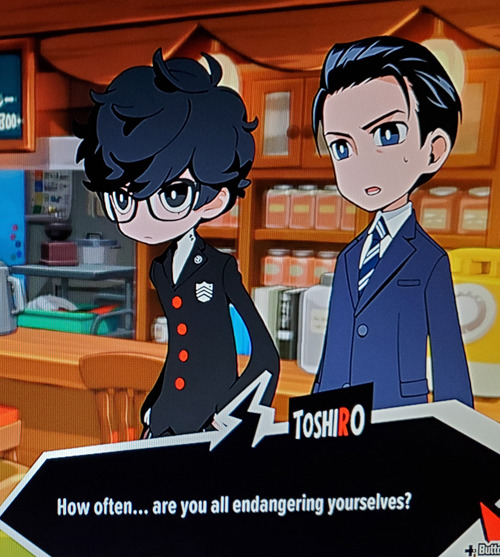#EV point charging app
Explore tagged Tumblr posts
Text
AC Charging Station FAQs: Empowering Electric Vehicle Users with Knowledge

AC Charging Stations:
Electric vehicles are an emerging technology and their usage is growing profoundly. Earlier, these were not very popular, as people were not showing much preference towards these and the main reason behind this was the lack of charging stations due to which, people did not find electric vehicles to be convenient for their daily travelling. However, seeing this concern, the technology of AC charging stations was improved and now these AC charging stations have contributed a lot in increasing the adoption of electric vehicles. People are provided with the convenience of charging their vehicles overnight at their home and at various public charging spots.
Although usage of AC charging stations has grown significantly, people still have lots of questions in their mind regarding them. So, below we will discuss some AC charging station FAQs.
AC Charging Station FAQs:
What is an AC charging station?
AC charging station is a kind of electric vehicle charging service which uses an alternating current for the purpose of charging EV. AC charging stations are basically installed by people at their homes for overnight charging. These are the slowest methods of charging EV. These stations can also be found at public places like parking lots, office parkings, shopping malls and other places.
How much time is taken by an AC charging station to charge EV?
On an average, approximately 4-8 hours are taken by AC charging stations to charge the electric vehicle.
Is it possible to charge all the electric vehicles with AC charging stations?
As standardised connectors are used for AC charging stations, these are compatible with all the electric vehicles.
What’s the difference between Level 1 and 2 AC charging stations?
Level 1: For level 1 AC charging, a standard household outlet is being used,as the energy requirement is 120 V. The range added to the EV by these is 3-5 miles in an hour.
Level 2: the voltage requirement is 240 V and 10-60 miles of range is added to the EV. These charging stations are commonly found in public spots like parking lots, shopping malls and other public places.
What is the cost of charging a vehicle with an AC charging station?
It varies according to the location, network provider and the electricity rate in the area.
Is it possible to charge EV at home with an AC charging station?
Yes, as mentioned above, Level 1 AC charging stations can be installed in standard household outlets but for level 2, a dedicated outlet is required along with professional installation.
How can I find an AC charging station?
You can My EV point charging app to locate our charging station.
Overall, AC charging stations prove to be very convenient for EV owners in various ways. You can install my EV point charging app for easy and hassle free charging from our widely located charging stations. For more information, you can contact us at any time at [email protected] .
1 note
·
View note
Text
Faster, Smarter, Greener: The Perks of Level 2 Charging
If you’ve ever plugged in your EV and waited hours for a full charge, you’re not alone. That’s where Level 2 charging steps in. It’s like going from a garden hose to a fire hydrant—more power, less wait. Whether you're on the go or charging overnight at home, Level 2 brings convenience and efficiency together.
Unlike the basic Level 1 charger that trickles power into your battery, Level 2 delivers a noticeable boost in speed. It's designed for drivers who want their EVs ready when they are—without rearranging their entire schedule.
Why make the switch? It all comes down to smarter energy use and better driving experiences. With Level 2, daily top-ups are quicker, making it ideal for regular commutes. You won’t be hunting for a plug or worrying about running out of juice.
Thinking about home setup? EV charging station installation can turn your garage into a personal fueling station. It’s also a great option for workplaces and public spots to support more EV drivers on the road.
Sustainability gets a boost With faster charging at your fingertips, it’s easier to stick with eco-friendly travel. EV charging station installation isn’t just about convenience—it supports a shift toward cleaner transportation options.
The Takeaway Level 2 charging is all about speed, simplicity, and supporting the future of mobility. Whether you're upgrading your home setup or improving access in your community, EV charging station installation helps pave the way for a greener tomorrow.
0 notes
Text
Introducing Mobec: A Game-Changer in the EV Charging Market
As electric vehicles (EVs) become more popular, the demand for EV charging stations has increased. However, finding a charging station can be inconvenient, especially on a long road trip. This is where Mobec comes in – a portable EV charging solution that could revolutionize the EV charging market.

What is Mobec?
Mobec is a Noida-based, one-of-a-kind Portable EV charging solution start-up. Mobec, in its name itself, refers to Mobile Electric Charger. Its main aim is a hassle-free transition towards green and sustainable energy solutions.
Mobec provides a portable EV charging solution to charge your electric vehicle anywhere. It is a game-changer in the EV charging market, eliminating the need for fixed (static) charging stations. With Mobec, you can charge your EV at home, at work, or even on the go.
How does Mobec work?
Mobec consists of a portable battery pack and a charging cable, which is a power-dispensing EV Charging gun that uses the onboard battery bank to charge multiple EVs as per their demand. The battery pack can be charged using a standard wall outlet or a solar panel. Once the battery pack is fully charged, it can charge an electric vehicle.
What are the benefits of Mobec?
Mobec offers several benefits over traditional fixed charging stations:
Charging Infra benefits:
Mobec is cost-effective. Fixed charging stations require significant infrastructure and maintenance costs. Mobec eliminates these costs as it does not require any infrastructure.
Due to on-demand charging, users do not have to rely on the availability of nearby EV Chargers.
Reduces installation time.
Eliminates massive idle/downtime
Charging Service benefits:
On-demand Portable Rescue Charging M-CAAS (Mobile-Charging as a Service)
Charge anytime and anywhere
Daily charging
Schedule your everyday portable charger in advance or call it on demand (Mobec instant Solution)
Highway RSA (Roadside Assistance)
Highway assistance will have EV users plan interstate or intercity travel in their EV, which was not possible previously. Users can plan their long trip (intercity or interstate) route with Mobec so they would not have to worry about charging infra.
Societies, office spaces, fleet operators, auto manufacturers, car rentals, etc., can directly have Mobec on-demand charging services to solve their EV charging needs.
Who can use Mobec?
Mobec is suitable for anyone who owns an electric vehicle. It is handy for those who travel frequently or live in areas with limited charging infrastructure. Mobec is also helpful for businesses that want to offer EV charging services to their customers but want to avoid investing in fixed charging stations.
Conclusion
Mobec is a game-changer in the EV charging market. It offers a portable, cost-effective, and environmentally friendly solution to serve the increasing demand for EV charging. With Mobec, EV range anxiety is a thing of the past; you no longer have to worry about finding a charging station – you can charge your EV anytime and anywhere.
#Mobec Innovation#mobec#ev charging solution noida#mcaas app#vehicle charging station#fast charging ev#nearby ev charging stations#ev charging station#quick charge#charging station in delhi#charging station electric vehicle#car charging station nearby#fast ev charger#vehicle charger#portable power bank#fast charging#charging station ev#nearest electric vehicle charging station#charging points near me#electric car charge stations#ev charging point near me#charging electric cars#ev charging stations in india#fast charge app#ev charger solution#portable ev charging#electric vehicle charging station#electric vehicle charging station in india#charger ev#ev fast charger
0 notes
Text
I’m a musician who played on Bourbon street on New Year’s Eve. Here’s what I have to say about the republican politicians trying to score points at the expense of all the people around me that night.
Every act of terrorism is inherently political. And since the right wing power structure in charge of this country is rushing in to speak on behalf of me and my friends and coworkers—the folks who work on bourbon street and have to deal with the aftermath of this attack—I’m going to speak out too. If you feel it’s crass to “politicize” this, remember, the terrorists and the politicians already have, so why not hear from an actual musician who was actually working that night on bourbon street.
When the people in power impose their moral code on the populace using violence. Weather it’s the cops attacking random black men during traffic stops, or the military of an apartheid state bombing civilians, or the oligarchs in control of a private prison system filling their jails to capacity. It’s called state-violence, and it’s legal. When people who are not in power use violence against random civilians to impose their own morals it’s called terrorism.
The only things that differentiates a Jihadist attacking bourbon street, from a military drone bombing civilians or a policeman beating a handcuffed man to death is the flag they waive. Whether the flag has an isis insignia, a Star of David or a thin blue line makes no difference to the victims. To kill civilians at random is an act of terror. To collectively punish the people is a war crime. These people are all the same. The terrorist, the conservative senator and the billionaire all believe you should be forced to do as they say and if you resist you should be punished with violence.
That’s why the gauntlet of conservative politicians using this attack to their own ends makes my blood boil. The beliefs of an average Republican senator today are barely different from the Islamic fundamentalists commuting mass murder. The state government that bans pornography for religious reasons, that forces their own religious iconography in schools, that makes divorce illegal, that arrests women for the way they dress, that arrests women for having an abortion when the pregnancy will kill them, or when the mother is 12 years old—has more in common with ISIS than they do with you or me.
The conservative politician’s psychopathic need to force their particular interpretation of their particular religion on us is exactly the same need as Isis. Which sect of which religion they impose hardly maters. The only functional difference is that the conservative power brokers that run our country have the law and the police on their side.
So to Trump and Landry and the slew of right wing demagogs trying to profit from the death and suffering on New Years, I’m telling you from the bottom of my heart, you are the same as the terrorists. Your psychotic need to impose your beliefs, and your willingness to use violence on innocent people to do so, puts you squarely in the company of all the other terrorists. Your views on women’s rights and religious freedom are barely different than ISIS. Through the policies you’ve imposed you’re already responsible for more deaths than the shooter. You are bad people to the core not just for using these deaths to your own advantage but because your beliefs and desires are barely different than the terrorist that committed them.
New Orleans is the freeist city I’ve ever lived in, in the least free state. The Louisiana government is controlled by religious extremists imposing their religious doctrines by force. These people are not like us. Senator Mike Johnson has an app on his phone designed for evangelical fundamentalists that alerts him if his son masturbates. JD Vance is an avowed Christian Nationalist who’s stated goal of making America a Christian Nation means forcing the country’s laws to abide by HIS interpretation of HIS sect of HIS religion, which means everything from no drinking on Sunday to making porn illegal to re-criminalizing marijuanna to forcing doctors to let woman die rather than perform abortions.
The same reason the Isis inspired terrorist chose the French quarter of New Orleans as a target—the debauchery, the decadence, the partying and music and joie de vivre that the city is known for, is exactly what the conservative terrorists that control our legislature hate about the city. The only point of contention the Republican dominated government and the Isis inspired terrorist have with one another is which sect of which religion gets to impose its totalitarian ideals on the rest of us. Jihadism is already here, it’s just called Christian Nationalism. Sharia law is already here it’s just called Project 2025.
13 notes
·
View notes
Text
2025 Guide to Obtaining a Driver’s License in Canada: Navigating New Laws and Technology Advancements

Getting a driver's license in Canada is an exciting milestone for many, but the process and requirements can be a bit overwhelming. Whether you're a newcomer to Canada or you're looking to upgrade your existing license, understanding the latest regulations and changes in licensing laws is crucial in 2025. In this comprehensive guide, we’ll walk you through the steps to obtaining your license, the new driving laws to be aware of, and how technology is transforming the entire process.
1. The Current Licensing System in Canada
Canada follows a Graduated Driver Licensing (GDL) system, which is designed to ensure that new drivers gain experience and skills progressively. While the structure is generally consistent across provinces, specific rules and regulations can vary depending on where you live. The basic stages of licensing are:
Learner's Permit (G1, Class 7, etc.): This is the first stage of the process. It allows you to drive under the supervision of a fully licensed driver.
Intermediate or Probationary License (G2, Class 5N, etc.): Once you’ve gained enough experience with your learner’s permit, you can take a road test to obtain an intermediate license. At this stage, you may face some restrictions, like driving with fewer passengers or not driving at night.
Full License (G, Class 5): After a specified period with your intermediate license, you can take the final road test to earn a full, unrestricted driver’s license.
In 2025, it’s important to remember that this process might involve new steps or changes due to emerging technology and evolving road safety laws.
2. New Driving Laws in Canada (2025)
As of 2025, Canadian provinces have updated some of their driving regulations to keep up with the times. Here are some notable changes:
Electronic Vehicles and Emissions Regulations
With Canada’s ambitious goals to reduce greenhouse gas emissions, there have been changes in vehicle emissions standards and the promotion of electric vehicles (EVs). Some provinces now offer incentives for first-time buyers of electric or hybrid vehicles. Expect to see stricter emissions tests during your license renewal, and be aware of the new laws on EV driving zones and charging stations.
Road Safety Innovations
Advancements in road safety technology are also impacting licensing laws. In some provinces, new drivers are required to take courses on the latest safety innovations, such as Advanced Driver Assistance Systems (ADAS). These systems help drivers maintain safe following distances, avoid collisions, and stay within lane markings. For 2025, drivers may need to demonstrate knowledge of these systems before passing their road tests.
Distracted Driving Laws
Distracted driving remains a key concern in Canada. In 2025, the laws surrounding this issue have become even stricter. Texting while driving, using a handheld device, or even interacting with in-car technology (like infotainment systems) can result in higher fines, more demerit points, and longer license suspensions.
3. The Role of Technology in the Licensing Process
Technology is changing the way we approach driving and licensing in Canada. The process of studying for and obtaining a driver’s license is more accessible than ever before, thanks to digital platforms and online resources. Here’s how:
Online Knowledge Tests
In many provinces, you can now take the written knowledge test online. This flexibility allows learners to take the test at their own pace and convenience. The shift towards digital tests also means that more practice resources and study guides are available through mobile apps and websites.
Digital Driver’s License
Several provinces, including Ontario and British Columbia, have introduced digital driver’s licenses (eDL). These are secure, digital versions of your physical license that you can carry on your smartphone. You’ll be able to use them for identification, purchasing alcohol, and even showing your license to law enforcement officers if required.
AI in Road Testing
Some provinces are experimenting with AI-assisted road tests to improve accuracy and fairness in the evaluation process. Artificial Intelligence (AI) can monitor your driving behavior in real time during the road test, identifying mistakes or areas for improvement. While human examiners are still involved in the process, AI can provide an additional layer of feedback.
4. How to Prepare for Your Test in 2025
With all these new changes, preparing for your road test might seem daunting, but with the right strategy, you’ll be ready in no time. Here are some tips:
Use Technology to Your Advantage
Online Practice Tests: Websites like licenseprep.ca offer practice tests and study materials that are updated to reflect the latest laws and road signs. This is a great way to familiarize yourself with what’s on the test.
Driving Simulators: Some driving schools now offer simulators where you can practice your driving skills in a controlled environment. These simulators replicate different road scenarios, from city traffic to icy roads.
Learn the Rules and Master Road Signs
Study the Driver’s Handbook: The driver’s manual is still your best resource for learning all the rules of the road. Make sure to study road signs, traffic laws, and safety regulations.
Take Driver’s Education: Enrolling in a professional driving school can help you gain real-world experience. Many driving schools now offer courses that integrate technology and in-vehicle training to prepare you for your test.
5. Tips for a Successful Road Test
To ensure you pass your road test on the first try, here are a few practical tips:
Practice with a Licensed Driver: Before taking the test, practice driving under different conditions—highways, residential streets, and busy intersections. Make sure you are confident in your ability to handle all driving situations.
Stay Calm and Focused: Road tests can be nerve-wracking, but staying calm and focused will help you perform better. Follow all instructions carefully, and don’t rush. It’s okay to take a moment to compose yourself if needed.
Check Your Vehicle: Ensure your car is in good condition. Check that the lights, signals, and brakes are working, and ensure your mirrors and seatbelt are adjusted properly.
Ready to Hit the Road in 2025?
In 2025, obtaining a driver’s license in Canada is easier and more accessible than ever before, thanks to advancements in technology and updated driving laws. Whether you’re a new driver or renewing your license, staying informed about these changes will help you navigate the process with confidence.
Learn the Rules with licenseprep.ca Driving laws may differ from what you're used to. Use licenseprep.ca to study road signs, local rules, and prepare for your tests confidently.
#CanadianDrivingLicense#GDLCanada#2025DrivingLaws#ElectricVehicleIncentives#AIinDriving#licenseprep#DrivingTestTips#LearnToDriveCanada#NewDriver2025
2 notes
·
View notes
Text
Excerpt from this story from Canary Media:
[If you want the report described in this story, here's the link.]
It’s bad enough when a public EV-charging station is out of service. It’s worse when your app doesn’t know that and sends you there just as you’re in desperate need of a charge.
This experience is all too common among the U.S. EV drivers who don’t have access to Tesla’s dependable network, per a new report on EV-charger reliability based on exhaustive data collected from the field.
Unreliable public charging infrastructure and unreliable information on EV-charger uptime have become two of the biggest barriers to the EV transition in the U.S. That’s a problem, as the country needs to shift to EVs fast in order to slash carbon emissions from transportation. But it’s a problem with clear, if complicated to implement, solutions.
So says the inaugural annual reliability report from ChargerHelp, a startup that trains and employs technicians who service and repair EV-charging stations in more than a dozen states. Its analysis of more than 19 million data points collected from public and private sources in 2023 — including real-time assessments of 4,800 chargers from ChargerHelp technicians in the field — finds that “software consistently overestimates station uptime, point-in-time status, and the ability to successfully charge a vehicle.”
That doesn’t mean that the technology under the hood of public charging stations is fundamentally broken, said Kameale Terry, ChargerHelp’s CEO and co-founder. But it does mean that players in the EV-charging industry have to work together — and with the federal and state regulators setting uptime requirements for chargers being installed with the support of billions of dollars of public funds — to solve the root causes of the problems at hand.
“When drivers say the charger doesn’t work, there’s a complex set of reasons why the charger doesn’t work,” she said. “It’s not as simple as a gas station. And to fix something that complex, we need to take a more collaborative approach.”
6 notes
·
View notes
Text
Today on P5T, our wet-blanket adult companion continues to be kind of soggy. Also cake, a grand time in the Velvet Room, and my complete inability to pronounce one of our new skills!
……sir, stop doing that pose. That’s not your pose.

Anyway, apparently it’s fine to namedrop Shido and Yaldabaoth in the notes, but the Thieves are still not allowed to talk about them in actual dialogue. Fingers still crossed we get a Maruki note. Come on, Atlus, you cowards.

The Velvet Room’s forge is finally up and running, so it’s time to fuse some personas. It’s… a little strange, because now each persona has an inherent skill, and then can inherit ONE and ONLY ONE skill from its component personas. Which… kind of sucks, because there’s a lot of good skills. We’re using the sub-persona system from PQ2, but Erina’s not allowed to have one because she doesn’t have a core persona. Lavenza is basically like “something is suppressing the power of the Wild Card, but now everyone can use sub-personas.”
She’s having a grand time working the forge, though. We should let Lavenza have even more heavy equipment and machinery.


She also gives you a smartphone app that allows you to reach the Velvet Room from the battlefield, because sometimes there are multiple battles in a row before you can go back to the hideout. Which, hell yeah, but also, Atlus stealing Jade’s blue phones. Add another thing to the list. XD
(I’m joking, of course, but still. The list of things Atlus has “stolen” is like 15 things long by now. XDDD)

Cute icon, though. (It's so weird to see Lavenza the same height as Akira?)
So far the main difference between Zenkichi and Toshiro (other than the fact that one is primarily called by his first name) is that Toshiro flagrantly does not want to be here. They’re both kind of concerned about the Thieves –

– but Toshiro’s concern absolutely comes from a place of not wanting this, or like, any situations to be happening. He’s constantly wanting to rethink any of the plans that involve danger, he can’t fight, he’s always prepared to run away, and he’s just basically kind of… indecisive? Ryuji admits at least once that he has a good point about not charging in there, but he wants people to listen to him when he’s not really being helpful in the current situation.
He’s willing to listen to orders when it involves leaving, though.


(So does that mean Erina's the Thieves' age? I can’t tell how old anyone is. Toshiro is described as a young politician, so like… early thirties?)

...that works.
So we’ve retrieved Ryuji and Haru after a clash at the armory, which just leaves Makoto and Yusuke under Marie’s control. The scouts bring work that she’s finally making final preparations for her wedding, because she’s found the groom at last!

Place your bets: Is this Yusuke, Akira, or Toshiro? The Thieves think it’s Yusuke, and set off for the town square to rescue both him and Makoto from the terrible fate of marrying this crazy lady. They’re baking a massive cake in the square, and have put the captured rebels in it? This lady is kind of actually the worst, what the fuck.

It’s a trap, of course. Brainwashed Makoto and Yusuke show up, and announce with disgust that Lady Marie doesn’t want a penniless brat like Yusuke, she wants Toshiro! ...thank goodness. Because if she wanted Joker, I’d have even more questions about her mental state. We go bravely into battle to save our friends by capturing the flag, but after a long fight, when Erina charges to plant our banner in place of the destroyed one, she gets shot! There’s blood! And Toshiro definitely knows her at least subconsciously through his amnesia, because THIS is the thing that gets him to stop being a wet blanket, and sprint through a hail of gunfire to get to Erina.
Genuinely thought for a second he was going to get a persona right here. But no, he just makes sure Erina’s stable, snatches up the flag, and charges in to claim the victory.



Despite freeing all the Thieves, the battle has taken a lot out of everyone, and Marie shows up in person with a goddamn army. It’s a bleak situation, and Joker can offer to distract her so everyone can escape, but for once, he doesn’t have to. The other rebels charge so that the Thieves can get Toshiro and Erina to safety, and we all flee back to Leblanc to figure out what to do next.
That’s where I stopped for the evening, with everyone trying to recover from getting beaten half to hell. I’m assuming that now that we have a full company of Thieves, we’re going after Marie directly, so we’ll see how that goes! The battles seemed easy at first, but they’ve been getting more challenging, so I’m curious how a Major Boss Fight will go.
I got a fusion accident in the Velvet Room, and the forge blows up. It’s hilarious even if it means Lavenza got blasted. XD

Morgana has a tearful sprite when you have to leave the rebels behind, continuing the trend of great Morgana faces.

And, finally, one of the skills on Haru's skill tree is a combination of healing and ailment cure. Which makes sense, for the first-level spell, but the second one…

I don’t know what it is, but for some reason I have so much trouble saying that second one. I get it on a theoretical level, but actually saying it out loud is not working. XDDDDDDD I guess they combined these because they didn’t want more branches on the skill tree, but… ugh.
Diaramrita. Why. :’D
9 notes
·
View notes
Text
I got the LEGO Lion Knights Castle
So recently I managed to get my hands on this new LEGO Castle set, and they did this cool thing with it where they put little messages from Majisto (the original LEGO Wizard from the 90’s) up in the corner at different parts of the build. But a few of these messages are a tad odd or interesting and I want to highlight them
A) First and definitely weirdest. So normally LEGO pieces are either 1 plate tall (a plate) or 3 plates tall (a brick.) A couple years ago they released this piece I like to call the “Minecraft candle” that’s only 1x1 studs wide, but is 2 plates tall.
The odd thing is that Majisto makes comments along the lines of “hey check out this weird piece” twice in the manual. The first time makes perfect sense because it’s the first time you use one (I think) in the entire build and it is a really weird part. The second time though is like halfway through the second manual, so like 3⁄4 's through the entire build and after you’ve put down like 100 of the damn things. It’s extra odd ‘cause sometimes these messages are like 30 steps apart, sometimes like 5, so they didn’t have to include a message there at all. If they were out of material it’d be fine to leave it blank.
B) A while back there was this mobile app called LEGO Legacy: Heroes Unboxed. In it it was implied that Majisto used to date Willa the Witch (and also Basil the Batlord but that’s beside the point.) According to this set, however, Majisto is actually Willa’s cousin. It was the medieval era I suppose…
C) One of the characters they had in the retro lineups was The Black Knight. He started off as a member of the Black Falcons before splintering off to start his own faction known as the Black Knights. While the Black Falcons and Crusaders/Lion Knights had a bit of a back and forth rivalry, and you were supposed to root for the Crusaders, but neither was really marked as outright good or evil and they had peaceful interactions from time to time. The Black Knights however were consistently antagonized by the story, and always depicted as enemies of the Falcons, Crusaders, and Forestmen.
We got some new lore in this manual. Apparently the Black Knight was driven to madness and greed after looking at a magical shard of amber now sealed in the Lion Knight’s dungeon. While the manual never explicitly states this I’m assuming the Falcons and Crusaders went to war over the Black Knight wanting the amber, and when the Black Knight left the Falcons and the Crusader King was replaced by the Lady of the Lion Knights peace came to the two factions.
D) At one point Majisto describes a gear as “what sorcery is this” and I’m like “dude, you’re literally a magic wizard how is this weird for you.” I don’t think LEGO was including gear pieces in those old Castle sets so it’s probably a meta joke, but I’m like 90% sure knights IRL had gears in siege machines and portcullis mechanics and shit. Majisto makes a similar comment about a wall attached with hinge pieces (again probably a meta joke about LEGO being less boxy then it used to but in-universe it would just be a simple diagonal wall.) and another wall that grows and bends when you open the castle up (and… fair enough for that one.)
E) The brown frog piece underneath the toilet trough is canonically not a pile of shit, it is a frog who has been shat on.
F) Majisto has to poop standing up because his minifig has a dress piece and those can’t bend to sit down.
G) At one point Majisto brags about being able to drop stones off the castle wall if the “dragon army” ever attack, which is weird because he’s the leader of the Dragon Knights!? TBF retroactively, in other LEGO media, Majisto has kinda become a Gandalf type, wandering from kingdom to kingdom helping where he can, so maybe he’s not considered their leader anymore and Burnabus took over/was always in charge in-universe. Also there are like three different groups of Dragon Knights, Majisto’s neutral Dragon Masters and then the evil Green Dragons and Red Dragons so maybe he’s talking about one of the latter two? Also also, if Ninjago is any indication, Dragons are a sentient race in the LEGO world so maybe some of them have militarized?
#LEGO#Castle#LEGO Lore#Majisto#Now that I own the updated Basil and Majisto figures I’m going to make them gay kiss don't tell anyone
3 notes
·
View notes
Text
How does Mindraev's EV car charging port infrastructure compare to traditional charging stations?
Mindraev's EV car charging port infrastructure offers several notable advantages over traditional charging stations, enhancing the overall experience for electric vehicle users. Here's a comparative analysis:
Speed and Efficiency: Mindraev: Utilizes advanced technology to offer faster charging times, often incorporating ultra-fast chargers that can deliver a significant amount of charge in a shorter period. This reduces wait times for users. Traditional Charging Stations: Often have slower charging rates, with many stations still using older technology that requires longer charging durations.
Accessibility and Availability : Mindraev: Focuses on widespread distribution, ensuring that charging ports are strategically placed in high-traffic and convenient locations such as shopping centers, workplaces, and residential areas. This increases accessibility for a broader range of users. Traditional Charging Stations: May be less ubiquitous and often concentrated in specific areas, potentially requiring users to travel out of their way to find a charging point.
User Experience and Integration: Mindraev: Incorporates user-friendly features such as mobile app integration for real-time monitoring, booking slots, and seamless payment options. Some also offer value-added services like on-site assistance and amenities for users while they wait. Traditional Charging Stations: Might lack advanced digital integration, making the user experience less convenient. Payment and usage tracking can be less streamlined.
Sustainability and Innovation: Mindraev: Emphasizes sustainability by using renewable energy sources and innovative technologies to reduce the environmental impact of their infrastructure. They also continually invest in R&D to improve their systems. Traditional Charging Stations: While some are beginning to adopt renewable energy, many still rely on conventional energy sources and may not be as forward-thinking in terms of technological advancements.
Reliability and Maintenance: Mindraev : Ensures high reliability with regular maintenance schedules and robust support systems to address any issues promptly. This minimizes downtime and enhances user trust. Traditional Charging Stations: Can suffer from inconsistent maintenance, leading to potential reliability issues and inconveniences for users.
In summary, Mindraev's EV car charging port infrastructure offers faster, more accessible, and user-friendly solutions compared to traditional charging stations. Their focus on sustainability, innovation, and reliability positions them as a superior choice for modern electric vehicle users.
2 notes
·
View notes
Text
I could ramble on about JerryRigEverything being a spineless centrist who whined about people "disrespecting" Donald Trump after his midhandling of COVID-19 got millions of Americans needlessly killed, but I'll save it. I wanna point out that the first tweet is a blatant lie. As of writing this (March 2025), Tesla has only opened their Supercharger Network up to:
Ford [2 EV Models]
General Motors (Chevrolet [4], GMC [2], Buick [0], Cadillac [2])
Volvo [4] (Polestar [2])
Rivian [2]
Lucid [1*]
Mercedes-Benz [5]
Nissan [1*]
*These automakers have multiple models (past and present), but only their latest model is currently able to use the Supercharger Network.
NOTE: Also, I excluded non-passenger vehicles because (if I'm not mistaken) Tesla's Supercharger agreement with other automakers strictly prohibits commercial vehicle charging. Therefore, I didn't count vehicles like the Ford e-Transit, Rivian EDV, Mercedes-Benz eSprinter, Nissan e-NV200, etc.)
On top of that, however, Tesla uses their formerly proprietary NACS plug at their Superchargers. However (as of March 2025), the vast majority of EVs for sale right now still use the former universal standard (and more capable and independently controlled) CCS1. Therefore, in order to charge at a Tesla Supercharger you need an adapter (on top of having a compatible car). Some automakers retroactively provide 1 free per vehicle. Others charge over $200 for it. So Tesla Superchargers aren't viable for everyone.
Ford is the automaker who has had access longest. They first gained access in February 2024 (a little over 1 year ago).
Mercedes-Benz is is the automaker who gained access most recently in February 2025 (a little over 1 month ago).
So, no, burning Tesla Superchargers to the ground (in North America) does not hurt EVs in general. The vast majority of EV owners are still using native CCS1 stations like Electrify America and ChargePoint (among plenty others). Most EV owners are already accustomed to a world without Tesla Superchargers. By far the primary customer at a Tesla Supercharger are Tesla vehicles.
Also, a lot of EV owners probably don't even know they have Supercharger access since it was a retroactively provided thing. And of those that do, some may choose to not go to Superchargers. Whether it be because of the Nazi whose pockets the charging session will fill, or because the only way to charge at a Tesla Supercharger in a non-Tesla vehicle is by signing up for a Tesla account, logging in, paying, and starting the session via the Tesla app.
Also-also, the only non-Tesla vehicles that are currently on sale with an NACS Plug are... the 2025 Lucid Gravity and Hyundai Ioniq 5.
So half of the non-Tesla EVs that could charge at a Supercharger are from a manufacturer that doesn't even have access yet. (The other, is an ultra-luxury, high-price, SUV from a startup who is just now starting deliveries in 2025).
Not to mention, Superchargers are 400 Volts, and the Ioniq 5 & Gravity are vehicles with 800 Volt batteries.
So, an Electrify America station can charge them at 250 and 350 kW, restively, (which enables Hyundai's advertised 18 minute charging time).
At a Tesla Supercharger, the vehicles have to step down the voltage with an on-board inverter. As a result, the Ioniq 5 can only charge at 150 kW, and the Gravity at 250 kW.
So guess which one drivers are probably gonna favor on road trips.
Tesla Superchargers also aren't equipped to deal with non-Tesla vehicles. All Teslas have their charge port on the driver-side, rear. Other EVs have them all over the place. Because Tesla's Superchargers only accounted for their vehicles, the cables are too short to reach some vehicles, making it impossible for certain vehicles to charge at a Supercharger.
And finally: NOT ALL SUPERCHARGERS SUPPORT NON-TESLA VEHICLES
Tesla has multiple versions of Superchargers. V1 and V2 are Tesla-only. Period. They cannot speak the CCS protocol. Therefore, they don't support non-Teslas at all.
V3 Superchargers can. These are the chargers that non-Teslas can use... However, not all of them support that. In areas of high traffic volume, Tesla artificially locks out non-Tesla vehicles from using these stations.
V4 Superchargers are a planned future installation. They have longer cables and support 800V charging to address compatibility issues... However, they don't exist yet because Elon Musk fired his entire Supercharging development team after the woman in charge refused to lay off more people in her team... so boohoo.




Holding up snarky signs doesn't seem to be working.
For me, it isn't about whether this action is appropriate or not. It's about how this kind of action is inevitable.
I'm going to let Dr. Martin Luther King Jr. explain in a quote no one seems to post during his annual holiday.
"It is not enough for me to stand before you tonight and condemn riots. It would be morally irresponsible for me to do that without, at the same time, condemning the contingent, intolerable conditions that exist in our society. These conditions are the things that cause individuals to feel that they have no other alternative than to engage in violent rebellions to get attention. And I must say tonight that a riot is the language of the unheard. And what is it America has failed to hear?"
If you only speak up about a supercharger catching fire and ignore the unheard, you are prioritizing a thing over people.
#this is really rambly and kinda messy but ig i'll post it anyway#/ / /#elon musk#fuck elon musk#elongated muskrat#fuck elongated muskrat#tesla#fuck tesla
48K notes
·
View notes
Photo

EV Charging CPO Mobile App Mockup (Figma) Introducing the EV Charging CPO Mobile App Mockup (Figma), a powerful and intuitive design tool that revolutionizes the way you create and prototype mobile applications for electric vehicle (EV) charging networks. Developed by industry experts, this cutting-edge Figma mockup empowers you to seamlessly design and visualize a comprehensive EV charging experience for your customers. With its user-friendly interface and advanced features, the EV Charging CPO Mobile App Mockup (Figma) enables you to craft visually stunning and highly functional mobile applications tailored to the unique needs of Charge Point Operators (CPOs). Whether you're designing for a nationwide charging network or a localized EV charging solution, this mockup provides you with the tools to bring your vision to life. Packed with a vast array of customizable components, including interactive maps, charging station details, payment gateways, https://millysoft.com/product/ev-charging-cpo-mobile-app-mockup-figma/?utm_source=tumblr&utm_medium=social&utm_campaign=STARTERKITS
0 notes
Text
Big news from the EV world—Statiq, one of India’s go-to platforms for EV charging, has officially partnered with HPCL (Hindustan Petroleum). What does this mean for you? Basically, charging your EV just got a whole lot easier across India.
According to EV Update Media, over 5,100 charging points from HPCL will now be available on the Statiq app. That means no more wandering around petrol pumps or searching different apps—you open Statiq, and boom—chargers everywhere.
What’s the Big Deal? Here’s What This Means for EV Owners:
5,100+ New Charging Points Go Live
We’re not talking about a small rollout here—HPCL is bringing over 5,100 chargers, and around 2,900 of those are fast DC chargers. That’s a massive boost for anyone who’s done the math on EV road trips or daily commutes and worried about charge time.
One App, All Access
Let’s be real—jumping between apps to check charger availability is a pain. With this integration, you can find, check, and navigate to HPCL charging stations ri
1 note
·
View note
Text
Electric vehicles are becoming a familiar sight on the road, but what about the technology that powers them at home and on the go? EV chargers might look simple on the outside—just plug in and go—but there’s more going on behind the scenes. Understanding the basics of how EV charging points work can help you make smarter choices, whether you’re an EV owner or considering the switch.
What Happens When You Plug In?
When you connect your car to an EV charger, you’re not just transferring electricity—you’re initiating a smart communication process. The charger and the vehicle talk to each other to determine:
How much power is needed
What the battery can handle
How long the charge should last
This ensures safety and efficiency every time you charge.
The Role of the Onboard Charger
Inside your EV, there’s a device called an onboard charger. It takes the alternating current (AC) from most EV charging points and converts it into direct current (DC), which your battery needs. Fast chargers, often found in public spaces, skip this step and provide DC directly, speeding up the process.
Smart Features Are the Future
Many modern EV charging points include smart capabilities. This could mean scheduling charges during off-peak hours, monitoring energy usage, or even connecting to solar panels. These features aren’t just cool—they can be practical for daily use.
In a Nutshell
EV chargers do more than pump electricity—they manage communication, convert power types, and offer smart tech options that simplify EV ownership.
0 notes
Text
Electric Vehicle Charger Rental Service Market: Addressing Urban Charging Deserts with Innovative Rental Solutions
Introduction
The rapid adoption of Electric Vehicles Charger Rental Service Market is reshaping the transportation landscape, necessitating the expansion of charging infrastructure. To meet this demand efficiently, the electric vehicle charger rental service market is increasingly turning to data analytics. By harnessing data-driven insights, stakeholders can optimize charger deployment, enhance user experience, and ensure the sustainability of EV ecosystems. As public infrastructure expands slowly, the EV charger rental service market has evolved to bridge this crucial gap, empowering EV growth by rethinking charging convenience and availability.

The Charging‑Desert Crisis
Studies in the UK reveal that approximately 75% of households without off‑street parking are more than a five‑minute walk from any public charger—underscoring a substantial coverage gap . Surveys confirm this deters EV purchase: a 2023 Ipsos study found 39% of UK drivers would consider EVs if home‑style charging were assured .
In the U.S., the situation is similar. Some 78% of Americans lack nighttime charging access, and 44% cite that deficiency as a reason to delay EV purchase .Even Uber has highlighted “urban charging deserts” as one of the major obstacles preventing drivers from shifting to EVs .
Emergence of Charger Rental Solutions
To combat these charging deserts, several innovative models have surfaced:
1. Peer-to-peer charger platforms
Startups like EVmatch and Charge Fairy in the U.S., and Co Charger in the U.K., enable individuals to rent their home chargers through online platforms . In London, Charge Fairy operates mobile charging vans capable of rapid charging wherever the vehicle is parked .
Co Charger, for example, connects around 5,500 host‑listed chargers, with users paying approximately half the cost of rapid commercial charging .
2. Pavement‑gully installations
UK startup Kerbo Charge is pioneering the installation of “pavement gullies”—safe conduits beneath sidewalks that connect chargers on private walls to street‑side cables . Philadelphia has already approved this infrastructure; British municipalities are piloting similar programs .
3. Curb‑side public installations
Brooklyn’s “It’s Electric” installs compact Level 2 chargers on public curbs, compensating property owners (≈US $3,500/year) for energy and usage . Their vision is to expand from 1,400 to 10,000 street chargers in NYC by 2030 .
4. Corporate-backed superhubs
Companies like Revel (originally a moped‑share startup) are erecting fast‑charging hubs (e.g., 40 stalls in NYC), linking infrastructure development to their own EV ride-hail fleets . This model helps create demand while building city‑wide networks.
Market Growth & Economic Drivers
Analysts project strong growth in the charger rental services market. A 2024 report notes US$521 million in federal funding for 9,200 EV ports across 29 states, boosting rental‑charging viability . North America leads the global charger rental space, fueled by rising EV ownership and enabling policies .
Europe mirrors this trend, with the UK targeting approximately 300,000 public chargers by 2030—up from roughly 45,000 today . Meanwhile, Germany aims for over one million charging points in the same timeframe .
Asia-Pacific markets, especially China and India, are also contributing significantly. In Q1 2024, China added 716,000 new charging piles (+13.2%), and India counts over 3.6 million electric vehicles on the roads .
Key Enablers: Tech & Support
Convenience and user‑apps
Rental charger providers differentiate through real‑time apps displaying charger availability, pricing, speed, and bookings—enhancing driver convenience .
Smart grid integration & renewables
Technological innovations such as dynamic power sharing algorithms help cities utilize limited electrical infrastructure efficiently . Integrating solar, battery, and V2G support (e.g., Mobilize’s Powerbox) helps stabilize the grid while offering rental providers unique value .
Infrastructure-as-a-Service (IaaS)
Shared housing operators and workplaces outsource charging infrastructure installation and operations to third-party vendors. These turnkey services offload technical and regulatory burdens .
Challenges & Bottlenecks
Despite rapid adoption, several hurdles persist:
High upfront costs for equipment, permitting, and installation can suppress ROI, especially in premium urban real estate .
Fragmented regulation and zoning laws vary between jurisdictions, complicating rollouts .
Infrastructure constraints, including grid capacity and space for installations, slow expansion .
Reliability concerns: one survey showed public charger uptime is only ~78%, fueling persistent "charger anxiety" .
Regulatory & Equity Considerations
To combat charger deserts, governments and advocacy groups emphasize equitable deployment:
The WRI recommends mapping multifamily residential areas and prioritizing public and rental chargers there .
In Cook County, authorities granted funds to develop chargers in under-resourced communities .
Cities like Seattle engage communities in decision-making to ensure inclusive access .
Without equitable planning, grid expansion might continue favoring affluent neighborhoods—undermining wider EV adoption goals .
Looking Ahead: Future Outlook
Scaling peer-to-peer networks Successful regional platforms like EVmatch could expand into national or continental services, especially if integrated with utility and city systems.
Hybrid infrastructure models A blend of rental, curb-side, and hub-based charging may emerge, optimized with AI tools allocating power dynamically and prioritizing grid resilience.
Policy-driven expansion Continued public investment (like U.S.’s NEVI program) and mandates for charging in development codes and new housing projects will encourage growth .
Grid-edge intelligence Integration of V2G, solar, and smart scheduling changes EV chargers into active grid participants. Tools like Mobilize’s Powerbox may drive new rental‑economy models .
Global standards & interoperability Establishing consistent plug compatibility and payment systems will reduce consumer confusion and accelerate rental adoption .
Conclusion
In the face of dense urban landscapes lacking private EV charging, rental-based access is emerging as a practical solution to the charging-desert dilemma. From peer-to-peer apps and mobile vans to pavement gullies and curbside installations, these services are turning underused or unhosted spaces into charging assets. Supported by government subsidies, smart technology, and equitable policy frameworks, the Electric Vehicle Charger Rental Service Market is poised to significantly fuel the next wave of EV adoption in cities.
To truly eliminate charging deserts, stakeholders must coordinate across technology, urban planning, and social equity. With innovation and investment continuing, the market for rental-based charging stands ready to reshape EV infrastructure—making electric mobility more accessible, affordable, and sustainable for all.
0 notes
Text
Step Into Tomorrow’s Commute – Visit the Bia Ather Showroom in Bangalore Today!

Visit BIA Ather Showroom Today!!!
Get in Touch with Us!!!
Book Your Favorite Ather Scooter Today!!!
Welcome to the future of urban mobility! At Bia Ather Showroom in Bangalore, we’re revolutionizing how Bangalore rides. As the city grows smarter, greener, and more dynamic, so should your vehicle. Our premium Ather showroom in Bangalore is your gateway to a new age of intelligent, eco-friendly, and performance-driven electric scooters. Whether you're looking for cutting-edge technology, long-lasting performance, or stylish, eco-conscious commuting solutions, Bia Ather is the destination of choice.
Why Choose Ather? Innovation on Two Wheels
Ather Energy has carved a niche in the Indian electric vehicle (EV) landscape by developing high-performance electric scooters backed by deep R&D and seamless connectivity. At the Ather Dealership in Bangalore, we bring you the complete Ather experience—from test rides and feature walkthroughs to financing options and post-sales support.
Our EVs are engineered for tomorrow’s commute. From lightning-fast acceleration to smart dashboard interfaces, every ride is a blend of technology, sustainability, and comfort.
Explore the Bia Ather Showroom in Bangalore
Located at the heart of Bangalore, the Bia Ather showroom is designed to give customers a fully immersive experience into the world of electric mobility. Our showroom isn’t just a retail outlet; it's a place where innovation meets convenience.
Key Features of the Showroom:
Interactive Demo Zones: Explore every feature with hands-on guidance from our experts.
Instant Test Rides: Feel the Ather difference on the road.
Live Charging Stations: Witness how our fast-charging tech works in real-time.
Personalized Consultation: Our consultants help you choose the right model and variant based on your riding style and commute needs.
Meet the Star – Ather Rizta in Bangalore
Among the fleet, the Ather Rizta in Bangalore is fast becoming the go-to electric scooter for urban riders. With its practical design, family-friendly ergonomics, and advanced tech features, the Rizta combines innovation with every day usability.
Top Highlights of Ather Rizta:
Range: Up to 125 km on a single charge.
Battery: IP67-rated battery pack, built for Indian conditions.
Storage: Class-leading under-seat storage capacity.
Ride Modes: Eco, Ride, and Zip modes to match your travel needs.
Smart Dashboard: 7-inch TFT touchscreen, integrated Google Maps, OTA updates.
The Ather Rizta isn’t just an electric scooter—it’s a commitment to a better future.
Ather Dealers in Bangalore – The Backbone of Electric Mobility
We take immense pride in being among the top-rated Ather dealers in Bangalore. With multiple points of presence across the city, we ensure you’re never far from world-class service and support. Each of our dealerships is staffed with certified technicians and dedicated support teams who ensure your journey with Ather remains smooth from the moment you step into our showroom.
What Sets Our Dealership Network Apart:
Quick & Transparent Delivery Process
Doorstep Test Rides
Priority Service Appointments
Genuine Accessories & Spare Parts
Real-time Assistance & EV Education
From Indiranagar to Whitefield, Koramangala to Jayanagar, we’ve got your Ather journey covered across Bangalore.
Electric is Now – Why Now Is the Best Time to Switch
Rising fuel prices, traffic congestion, and the need for clean air demand a radical shift in how we travel. Electric scooters like Ather are leading the way. Here's why Bangaloreans are embracing this transition faster than ever before:
Environmental Benefits:
Zero tailpipe emissions
Reduced carbon footprint
Quieter, less stressful commutes
Technology Benefits:
Always connected via mobile app
Smart diagnostics and OTA upgrades
Easy navigation, theft alerts, and ride statistics
With Ather, you don’t just ride—you ride smart.
Your Ather Journey Begins at Bia
Whether you're a college student looking for a cost-efficient ride, a working professional seeking a smarter daily commute, or a family person wanting a reliable second vehicle, Bia Ather Dealership in Bangalore has the perfect EV for you.
We Offer:
Easy financing with zero down payment*
Exchange bonuses on old two-wheelers
Fast-track delivery for pre-booked models
Extended warranty and AMC packages
Seamless insurance and registration
Charging Ahead – Ather Grid Across Bangalore
One of Ather’s strongest advantages is its robust public charging infrastructure—Ather Grid. With over 100+ charging points across Bangalore, you’ll never worry about range again. With fast charging speeds that can juice up your battery to 80% in just 45 minutes, the city becomes your playground.
Visit Us Today – Let the Future Ride Begin
The Bia Ather Showroom in Bangalore is more than just a dealership—it’s a revolution in motion. Join the thousands of smart commuters who’ve upgraded their rides, slashed their expenses, and embraced the future.
#ather dealership in bangalore#ather showroom in bangalore#ather showroom in jaya nagar#ather showroom in rajajinagar#ather showroom in jp nagar#best ather showroom in bangalore#ather showroom near me#ather dealers near me#ather dealership near me#ather 450#ather 450x on road price in bangalore#ather rizta price in bangalore#ather service center near me#ather service center in bangalore#ather service near me
0 notes
Text
Top Best Practices for Running a Successful Automotive Loyalty Program

The auto industry loyalty landscape is changing at a breakneck pace. From electric and connected cars to digital purchase journeys and green-minded consumers, auto brands need more than wonderful machines to remain relevant. They need committed customers. A thoughtfully crafted automotive loyalty program can accomplish just that—drive retention, increase service frequency, and build enduring customer relationships.
So, what are the best practices to develop a loyalty program that speaks to today's auto customers? Let's get started.
1. Know Your Audience In Depth
Indian car manufacturers and international auto brands now cater to a significantly more segmented audience—EV owners, price-sensitive families, tech-savvy millennials, and even garage DIY car enthusiasts. Your automotive industry loyalty program needs to appeal to these different segments.
Provide tiered rewards to car buyers, service clients, and spare part purchasers.
Offer customized experiences based on the type of vehicle, purchase history, or service behavior.
2. Engulf the Whole Automotive Ecosystem
Don't restrict loyalty to car buys only. The auto industry survives on post-sales services, maintenance, accessories, and spare parts. Loyalty has to be extended over this automotive ecosystem.
Combine spare part loyalty points with vehicle servicing and upgrades.
Provide rewards to customers who go to official service stations or bring in referrals.
3. Use Digital Tools & Platforms
To control rewards, monitor engagement, and offer personalized experiences, you require the correct tech. A sound loyalty program software or loyalty management platform can scale and automate your efforts.
Utilize mobile apps to monitor loyalty points, send offers, or book service.
Make digital wallets or codes available for quick point redemption at partner locations.
4. Reward More Than Just Purchases
While sales are crucial, automotive loyalty must also be about engagement. Reward customers for test drives, service appointments, social media shares, reviews, and referrals.
Initiate automotive loyalty programs that reward members for green practices such as choosing EVs or regular services.
Make reviews or testimonials worth it in exchange for small treats or service discounts.
5. Incorporate EV-Specific Rewards
As the electric vehicle industry surges, it's high time to tailor your loyalty programs accordingly.
Provide EV purchasers with rewards for visiting charging stations or eco-driving practices.
Establish special EV owner clubs with VIP treatment, early model releases, or battery upgrade offers.
6. Establish Community Loyalty
Loyalty is not merely transactional. Make customers feel part of a brand family. Organize community events, driving experiences, or knowledge sessions.
Host contests or quizzes on car performance and maintenance.
Reward milestones with your repeat customers, such as accessories or free services after owning a car for five years.
7. Track, Analyze, Improve
Lastly, leverage data from your loyalty management system to gauge success. What incentives work? Who is participating the most? Is there a drop-off?
Regularly check customer feedback.
A/B test promotions or incentives for increased performance.
Final Thoughts
In 2025 and beyond, loyalty in the automotive industry will not be about giving away discounts. It's about engagement, personalization, and crafting a total customer experience that extends far beyond the sale. By combining these best practices and leveraging the right tools, automotive manufacturers can gear up their retention model and build brand champions for life.
0 notes